This is the final post in a four part series on rookie performance on the World Cup. Â To recap: we’re trying to quantify differences in the level of preparation among athletes from different nations upon first entering the World Cup circuit. Â A “rookie skier” for our purposes is one who’s done seven or fewer races in a major international competition (World Cup, World Championships or Olympics). Â So far, we’ve looked distance events and sprint racing using FIS points as a measure of qualification speed.
This final installment will reexamine sprint racing, but using the final round finishing rank (1st, 2nd, etc) rather than qualification round FIS points. Â It actually turns out the results are largely similar (with one big exception), so I’m going to keep the writing to a minimum and just reproduce the same set of graphs for you to chew on.
First the boxplots for some particular nations and then collapsed down to four groups:
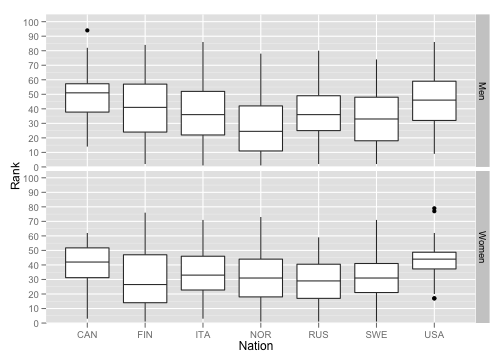
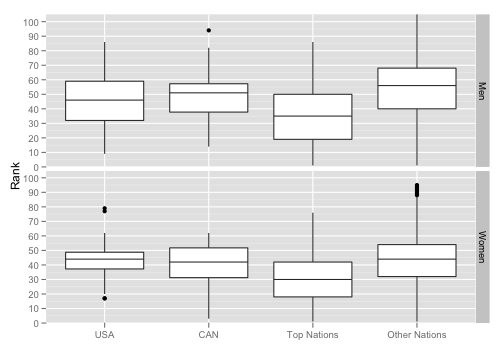
Next we have the time series plot that, as we are expecting by now, shows some global trends that need to be removed to make fair comparisons:
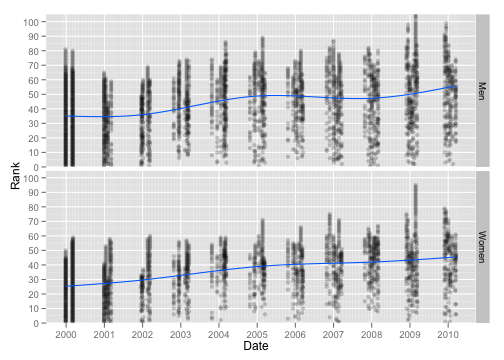
And the de-trended version:
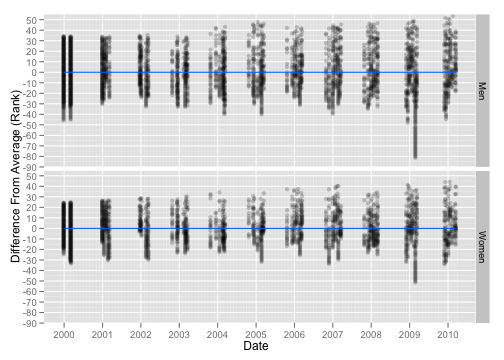
And finally we come to the “money” graph, the trends for the four groups, USA, CAN, Top Nations and Other Nations:
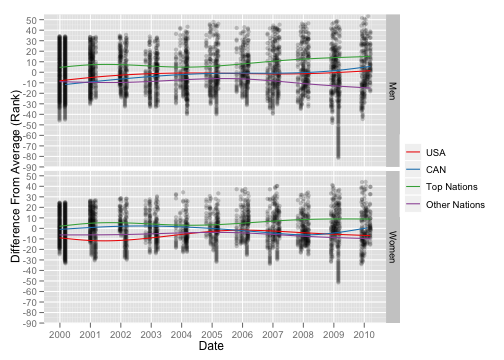
And then the “zoomed” version of the previous plot, and one with each group in a separate panel:
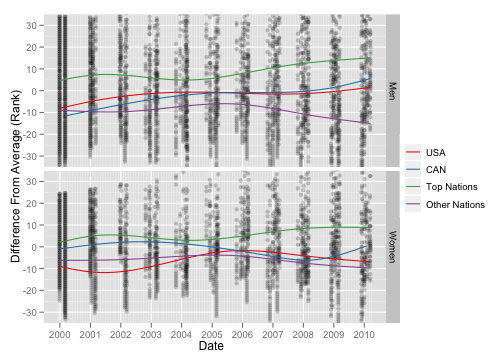
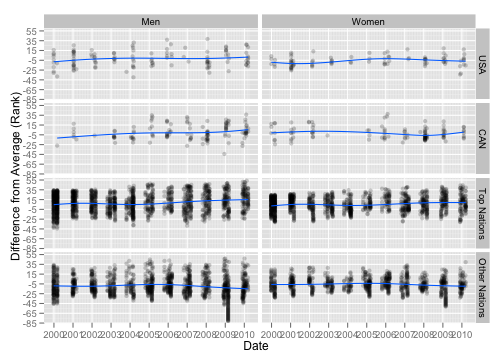
Spot the one big exception?  It’s in the trend lines for the women.  In the FIS point versions, the Canadian and American rookie women seemed to be performing steadily worse over the last few years.  When we look at rank, the Canadian rookie women seem to be improving lately, but in the case of finishing rank, the opposite is happening!  Surely these both can’t be true, right?
Ultimately, I think this is a feature, not a bug.  Qualification FIS points and finishing rank are measuring different things, so the fact that they tell different stories on occasion shouldn’t necessarily surprise us.  It’s entirely possible (though probably not likely to happen a ton) for someone to have a string of results where they qualify, but slowly, and then perform well in the heats.  The divergence of these trends for the Canadian women is based almost entirely upon a single season of sprint results, so it’s not like we’re seeing a major discrepancy between the two over a long period of time.  This just happens to be one of those times when qualification speed and final finishing rank don’t correlate all that well.
[ad#AdSenseBanner]
Post a Comment